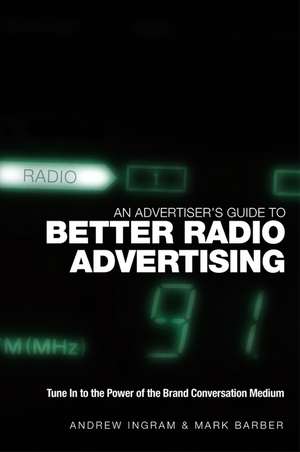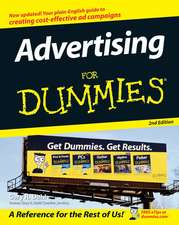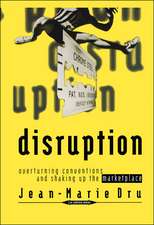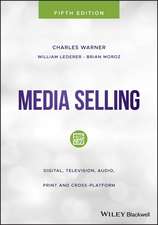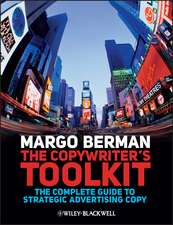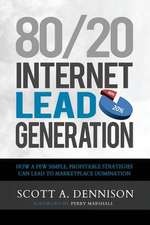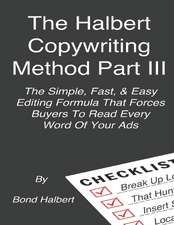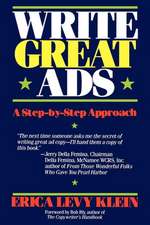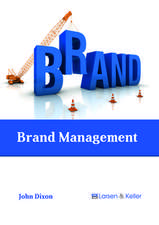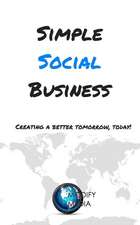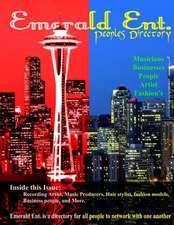An Advertiser′s Guide to Better Radio Advertising – Tune in to the Power of the Brand Conversation Medium
Autor A Ingramen Limba Engleză Hardback – 21 apr 2005
Preț: 409.00 lei
Preț vechi: 444.56 lei
-8% Nou
Puncte Express: 614
Preț estimativ în valută:
78.29€ • 85.07$ • 65.80£
78.29€ • 85.07$ • 65.80£
Carte tipărită la comandă
Livrare economică 21 aprilie-05 mai
Preluare comenzi: 021 569.72.76
Specificații
ISBN-13: 9780470012925
ISBN-10: 0470012927
Pagini: 232
Dimensiuni: 152 x 229 x 14 mm
Greutate: 0.48 kg
Editura: Wiley
Locul publicării:Chichester, United Kingdom
ISBN-10: 0470012927
Pagini: 232
Dimensiuni: 152 x 229 x 14 mm
Greutate: 0.48 kg
Editura: Wiley
Locul publicării:Chichester, United Kingdom
Public țintă
Marketing, Advertising and Brand Managers; Advertisers and Media Planners; Creative and media agencies and the global radio marketing industry.Cuprins
Foreword by Jo Kenrick.
How to use this book.
Acknowledgements.
About the authors.
SECTION 1: The Case for Change.
1 The Scale of the Medium.
1.1 The development of commercial radio in the UK.
1.2 Measurement and growth of the commercial radio audience.
1.3 Who listens to commercial radio?
1.4 Radio's status as an advertising medium.
1.5 What does the future hold for commercial radio?
1.6 Summary.
2 The 'True' Radio Context.
2.1 Why and how people listen.
2.2 Radio's media attributes.
2.3 How radio communicates.
2.4 Effectiveness of the medium.
2.5 Summary.
3 The Need for a Different Approach.
3.1 Why the need for a different approach?
3.2 Why does radio advertising have to be creative?
3.3 Why aren't we better at using radio?
3.4 The challenges and opportunities of the medium.
3.5 Summary.
SECTION 2: Harnessing the True Power of Radio.
4 What is Advanced Level Creativity?
4.1 Effectiveness is a relative term.
4.2 Three common structural problems.
4.3 The crucial importance of brand linkage.
4.4 Realism vs. shooting for the moon.
4.5 Thinking at campaign level.
4.6 Summary.
5 Best Practice Process for Creating Better Radio.
5.1 Providing the optimum radio brief.
5.2 Judging good radio ideas.
5.3 The art of radio production.
5.4 Branding in sound.
5.5 Summary.
6 Measuring Radio's Effect.
6.1 Defining the research objectives.
6.2 The importance of split samples.
6.3 Where to do the research.
6.4 When to do the research.
6.5 Sample sizes.
6.6 Method and questionnaire.
6.7 Measuring the short-term sales effects of radio.
6.8 Measuring the effect of radio sponsorships and promotions.
6.9 Summary.
SECTION 3: Thinking about Radio as 'New Media'.
7 The New Challenges Facing Brand Communications.
7.1 The evolving consumer context.
7.2 How brand marketing is changing.
7.3 Dialogue, the new brand driver.
7.4 Summary.
8 Radio's Role in Emerging Brand Thinking.
8.1 Radio as a brand conversation medium.
8.2 Harnessing the power of radio for brand conversations.
8.3 New conversational roles for radio.
8.4 Summary.
SECTION 4: The Seven-Step Guide to Better Radio Advertising.
9 The Seven-Step Guide to Better Radio Advertising.
Step 1: Define a clear role for radio.
Step 2: Keep the brief simple.
Step 3: Ask for the team with radio skills.
Step 4: Take care over tone.
Step 5: Use the right judging criteria.
Step 6: Use preproduction.
Step 7: Consider using a director.
Summary.
SECTION 5: Appendices.
Appendix 1: The RAB Bus Research Study.
Appendix 2: Radio Script.
Appendix 3: Online Radio Ads Track Listing (www.better-radio-advertising.co.uk).
References.
Index.
